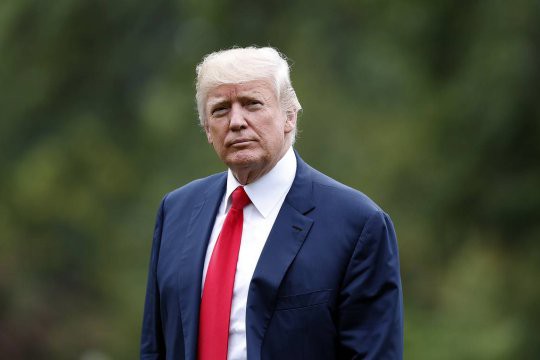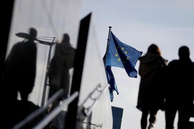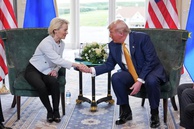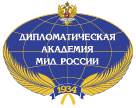An article with this title could have been published back in early 2017, when the world witnessed the attempted return to power by a segment of the American political class that one might call the “national-patriotic” camp – to use a post-Soviet term familiar in Russia, albeit with an American twist, of course.
The first steps of the current US administration have often been perceived by outside observers as some oddity – an inexplicable departure from the understanding of American policy goals and objectives that had become familiar and widely accepted by practically the whole world, especially during the 1990s and 2000s.
However, the political news coming out of Washington today reflects long-standing domestic developments in the US and the implementation of pre-formulated, thoroughly prepared plans. These plans align with the goals and objectives of a particular school of American political (and economic) thought – one that is largely unfamiliar to Russia’s political class but is now associated with the name of President Trump.
In the 1990s, during the Clinton era, these people called themselves “America Firsters.” They did not oppose the outside world per se, but rather set themselves against American and, more broadly, Anglo-Saxon internationalists – the so-called globalists and neocons – whose interests had been represented primarily by Democratic administrations in recent decades. (Although not exclusively: Following the military, political, and economic triumph America experienced after the successful outcome of World War II, any neutralists and isolationists were effectively pushed out of Washington for years to come.)
The first attempt by traditional, highly conservative America to reassert itself after two Clinton terms could be seen in its vote for George W. Bush, who defeated the very liberal Al Gore and John Kerry.1 And the way the leftist American media establishment treated the hated Bush at the start of his presidency was no different from its later treatment of Donald Trump. It was only the events of September 11, 2001, and the subsequent dawn of a new era of US humanitarian interventionism on a global scale, that reconciled the globalists – both Democrats and Republicans – with him. The so-called neoconservatives took key positions in the national security apparatus and the State Department, effectively taking over Bush’s presidency. After that, the anti-Republican mainstream media in the US quickly forgot its early complaints against Bush that had been voiced so loudly during the first months of his administration.
Even then, however, not only the possibility but the inevitability of a return to power by supporters of a “different America” – those in the mold of Eisenhower, Kennedy, Nixon, and Reagan – was already apparent: During George W. Bush’s captivity under the neocons, this was clear not so much to external observers and actors, but to domestic players within the US political arena.
This is what may explain the extraordinary zeal with which, in the 21st century – under both Obama and Biden – American liberal dreamers on both the left and the right pursued their agenda. Globalists and “wokeists” tried to stake out as much ground as possible before being forced to retreat (only temporarily, they hope) in the face of the arrival of realists – conservatives who are right-wing in every sense.
Eight years ago, following the 2016 election, these conservatives and national patriots gained an opportunity to review and revise the American state system: They were represented not only by President Donald Trump himself but also by his inner circle – Steve Bannon and other public figures of his first administration whose stated goal was to make America great again.
But at that time, the liberal “Clintonites,” neocons, and other internationalists opposing the conservatives and patriots – viewing Hillary
Clinton’s loss as a vexing imbroglio – managed to effectively neutralize the would-be threat. An unprecedented pressure campaign from all sides against the newly elected US president, constant attempts to remove him from office, and the deliberate sabotage of the bureaucracy (formed by the neocons for their own purposes) forced Trump’s first administration into deep defense and effectively deprived it of any ability to take offensive actions.
Everything is different now: The second Trump administration is conducting exclusively offensive operations; moreover, it has warned its opponent in advance about the main directions of its strikes against the deeply entrenched system that makes crucial political decisions and operates above official bureaucratic barriers and divisions – a system that has come to be known as the “deep state.”2 This refers not only to draining the Washington “swamp” of long-time, irredeemably corrupt bureaucrats across various agencies, including the Treasury Department, intelligence services, and the law-enforcement system as a whole, but also to a full- scale restoration of the norms of the American Constitution – the freedom of speech, the right to own personal firearms, and so on.
Overall, one can speak confidently of a genuine revolution from above, carried out by the supreme authority in the legal arena. This second revolution (or coup) for the country is just as distinctly American as the first: It is grounded in the same common sense that infused America’s Founding Fathers, appeals to which in times past constituted an essential part of the country’s political tradition.3
To understand that tradition, consider this: “It was suggestive that in 1776 the American rebels claimed to be the real champions of the British Constitution and that in 1861 Southerners justified secession not on the right of revolution but on constitutional grounds.”4 It is evident that this trait of American revolutionaries sharply distinguished them from the participants of the well-known European revolutions that aimed to implement utopian transformations and the [1773-1775] Russian rebellion (which Pushkin called “senseless and merciless”). Unlike Cromwell, the Jacobins, the Russian February revolutionaries, and the Bolsheviks – who rejected the very foundations of the previous legal order – the leaders of the American Revolution did not view their uprising as an uncompromising revolt against those in power.5
It is the same today: All the zeal of Trump and his supporters is focused on restoring constitutional order and restoring America’s former greatness – not on pursuing yet another political utopia. Considering that it was the American colonists revolting against London who were the first in history to describe themselves as patriots, it is no surprise how suspicious the “deep people” and the traditional American elites who rely on them have been – and continue to be – of ideologies imported into America from abroad.
This very suspicion and distrust of the Old World (combined with Americans’ adherence to common sense) largely explains America’s long-standing and consistent rejection of Marxism, conceived in faraway London by two Prussian stateless émigrés, and all of its derivatives. Even today, when the ruling elites of contemporary Europe are to varying degrees infused with socialist if not outright Marxist ideas, for conservative American patriots the very word “socialism” carries an inherently negative connotation.6
America has always held a similarly wary attitude toward old European “imperialism.” Both competing trends in American foreign policy thought – isolationism and interventionism – were, at their core, cultural-psychological reactions to this powerful European irritant.
Of these two conflicting stereotypes of foreign policy behavior – on the one hand, the desire not to resemble imperialist Europe, and on the other, the desire to emulate it in all things – the first clearly prevailed during the first century of American history, despite both having the same origin.
The truly American foreign policy tradition, which differs markedly from the globalist practices of the past few decades, goes directly back to the legacy of the American Founding Fathers. For example, on July 4, 1821 (that is, two years before the Monroe Doctrine was proclaimed), then Secretary of State (and future president) John Quincy Adams spoke in no uncertain terms about the nature of his country and the temptations awaiting it in foreign policy: “She well knows that by once enlisting under other banners than her own, were they even the banners of foreign independence, she would involve herself beyond the power of extrication, in all the wars of interest and intrigue, of individual avarice, envy, and ambition, which assume the colors and usurp the standard of freedom. The fundamental maxims of her policy would insensibly change from liberty to force. She might become the dictatress of the world. She would be no longer the ruler of her own spirit.”7
It is entirely clear that for American globalist neocons (often former Trotskyists), these words of John Quincy Adams are either meaningless noise or an unwelcome nuisance: These figures have no reverence for the legacy of America’s Founding Fathers. Equally obvious, however, is that for ordinary American patriots – America Firsters – such anti-imperialist declarations by the Founding Fathers have always served and continue to serve as a call to action.
It is due to the European establishment’s ignorance of American history and traditions, especially its unique brand of anti-imperialism, that so much mutual misunderstanding arose between Brussels, various European capitals, and Washington at the start of Donald Trump’s first presidency.
The current state of paralysis experienced by the traditionally servile- to-America ruling elites of nearly all of Europe at the onset of Trump’s second presidency stems from the same cause: a complete lack of understanding of the distinctive development of American civilization, its key traits, and its historical trajectory.
This same ignorance also explains the evident astonishment with which external observers – those long accustomed to being in overt or covert, external or internal opposition to Washington – have received the actions of Trump and his allies. After all, over the three-quarters of a century since NATO’s founding, a distinct political subculture has emerged: a subculture of transatlantic opposition – first toward Eastern Europe (Eurasia), and then toward the rest of the world.8
This led to a situation in which the ancient, accepted code of confrontation went unquestioned for many decades after the profound mutation of America’s original foreign policy tradition in the aftermath of World War II.
In the mid-20th century, the centuries-old British fear of any form of “dominance” on the European continent overtook not only insular London but also continental Washington, which inherited a substantial portion of Britain’s colonial empire – transformed, of course, into a neocolonial one. The fundamental principles of London’s and Washington’s foreign policies effectively swapped places at that time. But in politics, unlike in mathematics, an interchange of terms changes the sum. The former opponent of European imperialism and colonialism – America, which had long and persistently pushed for the decolonization of European colonies around the world – having become the sole global superpower, could not resist the old temptations.
America, with nary a doubt, began increasingly to replicate the British legacy of burdensome global omnipresence, and even sensible Americans were left questioning the reasons for such behavior.
John Quincy Adams’s hopes that his country would not go “abroad in search of monsters to destroy” went unrealized: Already by the Clinton presidency, the Federation of American Scientists had recorded approximately 200 instances of the deployment of US armed forces for offensive action since the end of World War II.9
Exceptthatthe old-fashionedWilsonian “humanitarianinterventionism” was, in our own time, replaced by a new form of so-called humanitarian imperialism in the style of Dick Cheney and George W. Bush, and the mantras of the neocons became a staple of the Western informational mainstream.
Ultimately, the main thrust of the new US policy of “exporting democracy” – a kind of second edition of “exporting revolution” – became, in the words of the great American historian Charles Beard, “perpetual war for perpetual peace.”10 This policy flouts every value of the Founding Fathers.
But such a shift in American political tradition was by no means inevitable. This globalist and internationalist mutation of US foreign policy has long provoked irritation among Americans themselves – those who still sincerely cherish the political ideals of the republic’s Founding Fathers. Though this republic has retained its historical name to this day, it has politically and culturally mutated to such an extent that it may be time to consider changing that name as well.
One could say that since the Clinton presidency, the US has borne the same relationship to the historic American republic as the communist USSR of the 1930s bore to the historic Russian Empire – that is to say, clearly not a direct one. But the Soviet mutation of historical Russia had its own name, its own (confederative) state structure, its own flag, and its own coat of arms – all distinctly globalist and internationalist, incidentally. The notably mutated US, however, misled everyone with the two-century continuity of its external symbols.
For foreigners unfamiliar with and unaware of this complex issue, the passionate desire of American conservatives and patriots to make America great again is often difficult to comprehend. To these external observers, MAGA sometimes appears to be a strange whim of a group of eccentric billionaires, rather than a broad grassroots movement. This is why so many of them react with undisguised astonishment to the public actions of President Trump and his administration today, scarcely believing their eyes. They struggle to grasp the depth of the rift between the America Firsters – who regard their homeland and its greatness as an unconditional value per se – and the complex coalition of various globalists, neocons, wokeists, and transhumanists, with their purely instrumental (consumer) attitude toward American power.
It is hard not to notice that conservative American patriots, who form not only Trump’s electoral base but his bureaucratic and security backbone, speak just as loudly about restoring traditional public morality and about the American state defending what in our parts is referred to as traditional values as they do about restoring the nation’s economic power and the standard of living of its people.
This is precisely why today there is a sense of relief among all those European sovereigntists, Euroskeptics, Christians, and other traditionalists who, for the past several decades, have been persistently and mercilessly marginalized (as the “Putin’s friends club”) by the gloomy “liberal” progressives and wokeists who have controlled the EU bureaucracy and the majority of Europe’s ruling elites.
Indeed, until early 2022, the only beacon of hope for the European antibureaucracy opposition and conservative European Christians concerned about the advance of wokeism was Vladimir Putin, the leader of a great power who openly called himself a Christian and a patriot.11
Today, things have become especially difficult for Brussels-based atheists and wokeists: On February 26, the first meeting of the American cabinet began with a prayer of thanksgiving to the Lord by those present, after which President Trump [sic: US Secretary of Housing and Urban Development Scott Turner] quoted Psalm 33: “Blessed is the nation whose God is the Lord,” gave thanks to God “for this opportunity to restore faith in this country,” and concluded with an invocation of the name of Jesus.
It is evident that the new Trump administration is undertaking a conscious and thorough revision of all the departures of recent decades from traditional American values – religious, moral, political, economic, and even aesthetic.
For example, among the first 100 executive orders signed by Trump on the first day of his presidency was a directive on “promoting beautiful federal civic architecture.” Federal buildings are now to be constructed exclusively in classical styles, primarily neoclassicism, which, strictly speaking, was the style in which all important buildings in the country were constructed until the mid-1950s – before the widespread onslaught of various forms of modernism.
President Trump demanded that henceforth “federal public buildings should be visually identifiable as civic buildings and respect regional, traditional, and classical architectural heritage in order to uplift and beautify public spaces.”12 (One can easily imagine the outrage this retrograde order caused among the American or Russian architectural and broader cultural “coterie,” long accustomed to the privileged status of all kinds of modernists.)
It is important to emphasize that the revision aimed at restoring former greatness concerns not only domestic American practices – political, cultural, and economic – but also the very goals and objectives of American foreign and defense policy, as well as the methods and techniques for achieving these goals (and pursuing these objectives).
Essentially, as evidenced by recent public statements and actions of Trump and members of his administration, a new geopolitical reality13 is emerging before our eyes, one of whose most important elements may well be the complete emancipation of the US – both from the embrace of its tiresome partner, Great Britain, and from its equally overbearing European clients of the Cold War era.
It is within this reality that we will have to exist in the coming years and make political and economic decisions of national and global significance. That is why it is extremely important to take seriously the ideological constructs guiding the so-called Trumpists, both within the American government and within the much broader MAGA movement. These ideological constructs provide insight into the current actions (and even potential future moves) of this administration.
A number of conclusions can be drawn from Donald Trump’s public claims to take control (full command over) Canada and Greenland, and to reassert effective US control over the US-built Panama Canal.
First, the “Anglo-Saxon myth” of a unity of political cultures and interests between the US and Great Britain – launched in the late 19th century and embraced by many both in the US and abroad – stands a chance of becoming utterly obsolete.14 It is no coincidence that Trump, even before his own inauguration, effectively demanded that the British Crown abolish the position of Governor General of Canada (who currently has the authority to dismiss the country’s prime minister at any time).15
Second, one can assume a swift shift in US focus away from the Euro- Atlantic and toward the Arctic – thus implying a withdrawal from all the narratives and commitments associated with NATO and the so-called “transatlantic partnership,” whose obsolescence was already apparent during the George H.W. Bush administration.
Third, a return by the US to the foreign policy principles of the Founding Fathers and the authors of the Monroe Doctrine appears inevitable – a return to blocking both direct and indirect interference by third parties in the affairs of the Americas. This is bound to be followed by overt or covert abandonment of the Truman Doctrine, which permitted direct US intervention in the affairs of third countries even in the absence of a direct threat.
And clearly, given the absence in the Global South of any truly weighty global actors comparable to the US, China, the EU, or even India, the new geopolitical and geoeconomic reality will take shape primarily in the Northern Hemisphere – around Russia and/or with Russia’s involvement. Therefore, we Russians should concern ourselves not so much with finishing the old “chess games” on the global board – no matter how important or justified they may seem in light of recent history – as with identifying the directions of forthcoming changes and the emerging geoeconomic and geopolitical opportunities for us stemming from current events.
Undoubtedly, should Trump resolve the Canadian and Greenland questions – bringing Canada and Greenland under US jurisdiction – the application of the sectoral principle of Arctic shelf ownership would be dramatically simplified: The Norwegian sector would become merely a narrow border zone (possibly a condominium) between the two true masters of the Arctic.
In this context, we should be deeply concerned about the possible consequences of ongoing global warming in our (and America’s) polar territories. It is crucial to consider how various forecasts will play out in the coming decades and how this will affect the state of the Northern Sea Route.
Equally important for us is to be ready to elevate to a new level the long-established cooperation and partnership between Russia and the US not only in the exploration but also in the exploitation of space. On the agenda is the adoption of new (for us) practices in this field – primarily the use of private companies as developers and operators of new space technologies with global economic significance.
Moreover, everything indicates that the currentAmerican administration may soon employ rather harsh methods in its “war on drugs” to bring an end to – or to reshape and shrink – the global drug trade. This applies not only to the traditionally American (Colombian and Mexican) drug routes, but also to the Afghan and Asian ones, which have British/Chinese roots in terms of their historical genesis.
The anticipated end of NATO – a body that has created its own political subculture over recent decades and now seems resistant to reform – and the transition toward the creation of new systems of common (indivisible) security for both Eurasia and the Arctic, as well as for the entire Northern Hemisphere, present a clear challenge to our ability to swiftly adapt to emerging global realities.
Another (psychological) challenge could come in the form of the possible dissolution of the current UN. After all, nothing prevents either a sharp reduction in the US share of the UN budget or even a complete withdrawal. The average American has never held the same reverence for the UN that the average Russian continues to feel – this reflects a deep divergence between our foreign policy cultures.
(US Army Sergeant Michael New’s refusal to wear a UN beret or submit to foreign officers during an overseas mission in 199516 sparked a legal battle with the government that lasted over 10 years and raised the broader issue of whether American military personnel can be subordinated to non-American commanders or participate in UN operations without special authorization from Congress.17)
In today’s world, everyone must be prepared for anything – for any unconventional decisions. And in order to proactively (that is, preemptively) formulate the goals and objectives of the next phase of our national and global development – rather than merely responding appropriately to the initiatives and challenges of our global partners – we must clearly recognize the deep-rooted causes of the tectonic shifts that have occurred and are still unfolding in the US, and consequently across the entire collective West and the world at large.
Equally important is the understanding of the inevitability of the fateful consequences of these changes – and the necessity of preparing for them.
NOTES
1 In 2004, prominent Republican political strategist Karl Rove ensured George W. Bush’s victory by positioning him as a defender of the traditional family, while the John Kerry campaign relied on a different electorate.
2 https://www.donaldjtrump.com/agenda47/agenda47-preventing-world-war-iii
3 Thomas Paine’s pamphlet Common Sense, published in 1776 shortly before the proclamation of the Declaration of Independence with a print run of 100,000 copies, left a deep impression on American public consciousness.
4 Commager H.S. The American Mind. An Interpretation of American Thought and
Character Since the 1880’s. New Haven, 1950, p. 20.
5 The famous “Boston Tea Party” of 1773 was directed not against the British crown, but against a specific injustice committed in the name of the crown; therefore, the First Continental Congress, convened by future revolutionaries in 1774, initially petitioned the monarch to repeal the unfair tax laws.
6 Even within the current Democratic Party, explicit and implicit Marxists are rather a fringe movement.
7 LaFeber W. (Ed.). John Quincy Adams and American Continental Empire: Letters, Papers and Speeches. Chicago, 1965, p. 45.
8 The bloc has clearly ceased to be a truly North Atlantic organization beginning in the early 2000s, since the Afghan and then Iraqi operations carried out by NATO countries.
9 Vidal G. Perpetual War for Perpetual Peace: How We Got to Be So Hated. N.Y., 2002, pp. 21-41.
10 This is how Beard defined the foreign policy of F. Roosevelt; see, Beard C.A. President Roosevelt and the Coming of the War, 1941: A Study in Appearances and Realities. New Haven, 1948. A few years later, at his suggestion, the phrase was used by H.E. Barnes in the title of a collection of articles by American historians devoted to the same topic: Perpetual War for Perpetual Peace. A Critical Examination of the Foreign Policy of Franklin Delano Roosevelt and its Aftermath. Another 50 years later, during the George W. Bush presidency, the famous American writer Gore Vidal used the same words to title his pamphlet on the “war on terror”: Vidal G. Perpetual War for Perpetual Peace: How We Got to Be So Hated.
11 A luxury that only Prime Minister Viktor Orbán of Hungary and Jarosław Aleksander Kaczyński, chairman of Poland’s Law and Justice party, have allowed themselves within the EU in recent years.
12 https://www.whitehouse.gov/presidential-actions/2025/01/promoting-beautiful-federal-civic-architecture
13 This reality is nullifying the significance of Churchill’s Fulton speech in which he unsuccessfully offered the US Anglo-Saxon brotherhood and unity and proposed that the US and the USSR rule the world (on behalf of the UN) for three, maintaining British arbitration as part of the “Big Three.”
14 Everything was clear with the “Anglo-Saxon brotherhood” already during World War II, when Roosevelt – in exchange for the supply (with deferred payment) of American military equipment – took military bases from Britain and sought the dissolution of its empire, but now it looks very much like the American War of Independence is finally ending.
15 Back in the spring of 1853, Count Nikolai Muravyov-Amursky submitted a note to Emperor Nicholas on the need for close relations between St. Petersburg and Washington. He considered natural both “the dominion of the North American States in all of North America” (obviously including the real pearl of the British crown, Canada), and Russia’s focus on the “Asian coast of the Eastern Ocean” – i.e., Russia’s Far East.
16 The Washington Times. February 17, 2006.
17 Such a clash would have been impossible either in the USSR or in the Russian Federation: No one here would have refused, for ideological reasons (!), to wear the UN beret instead of the Soviet or post-Soviet beret.
read more in our Telegram-channel https://t.me/The_International_Affairs

 12:11 24.10.2025 •
12:11 24.10.2025 •



























